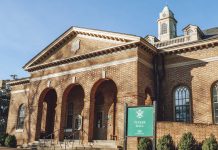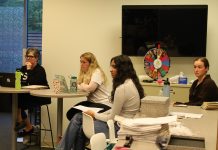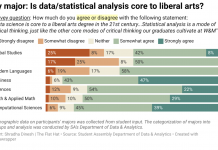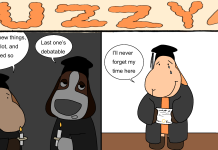p. The Journal of Blacks in Higher Education released its 14th annual survey of admissions offices this week, comparing first-year black student enrollment among the country’s 30 best universities, as ranked by US News & World Report. The College, ranked 31st, was not included in JBHE’s survey. However, if the College were included, it would have the 14th highest percentage of black members enrolled in the Class of 2010, ranked between Emory and Brown Universities. Out of 1,350 total students, the Class of 2010 has 106 black students, making up 7.9 percent of the class.
p. This is an improvement from last year, when the JBHE reported that only 5.5 percent of the College’s freshman were black.
University of North Carolina, Chapel Hill tops the list with black students making up 12.3 percent of its freshman class. Stanford University came in second with 10.1 percent. California Institute of Technology came in last with only three black enrollees out of 575 total freshmen.
p. The College had the highest black acceptance rate of all schools surveyed at 59 percent. The overall acceptance rate at the College was 32 percent. Dean of Admissions Henry Broaddus stressed that the high black acceptance rate can be a dangerously misleading statistic about a highly qualitative process.
p. “[This] has the unfortunate potential for misrepresenting the admission process we administer, which is a process whereby we consider the merits of each student within his or her own unique context and employ the same standards of admission for all applicants,” he said.
p. Broaddus also said that, in light of the highly qualitative and individualistic nature of the admissions process, a strong acceptance rate for black students most clearly speaks to a strong recruitment program for under-represented groups.
p. “Targeted recruitment is a primary focus of this office, and we devote extensive programming efforts to reaching underrepresented racial minorities, underrepresented low-income students and underrepresented geographic regions in order to ensure that the brightest students from all variety of backgrounds know about the opportunities William and Mary provides,” he said.
p. The College has access to demographic data on area high schools collected by the College Board. Admissions officers use that information to look for schools with students the College would like to see apply. They then recruit in a very personalized fashion.
p. “We are not satisfied right now,” Earl Granger, associate provost for enrollment, said. “There is opportunity to improve black student enrollment.” In addition to its standard recruitment activities, the College actively recruits minority students in a variety of diversity initiatives aimed at increasing cultural and racial diversity on campus.
p. Granger said the goal of any diversity initiative is to get students to come see the campus. “It’s one thing to talk about the colleges, but we need to get them to the institutions so they can see them,” he said. This has proven to be the most effective way to get students to apply.
p. The College sponsors several weekends aimed at getting minority students to come to Williamsburg. Autumn Blast, a weekend overnight program in the fall for diversity initiatives, invites minority students to come visit the campus before going through the application process. Spring Escape is a program for accepted minority students aimed at increasing enrollment yield.
The College also works with other organizations, such as College Summons and Partnership for the Future, in order to host events that bring minority and economically disadvantaged students to campus. Based in Richmond, Partnership for the Future is a college preparatory and youth employment program for high school sophomores that spans three summers and two academic years.
p. “As a small school, we are doing well, but there is opportunity for growth. We are very much poised to take on the challenge,” Granger said.
p. He said he hoped that the College would be able to achieve “critical mass,” the nebulous term made famous by Chancellor Sandra Day O’Conner’s decision in Grutter v. Bollinger, the University of Michigan’s Law School Supreme Court case. “Critical mass” signifies the perfect amount of diversity that maximizes learning experiences afforded to all involved. “Critical mass” would create a self-sustaining pipeline of minority students into a welcoming college community, ensuring continued diversity.
p. “We always need to make sure we’re pushing forward to ensure that all students are considering a place like William and Mary,” Granger said.




























